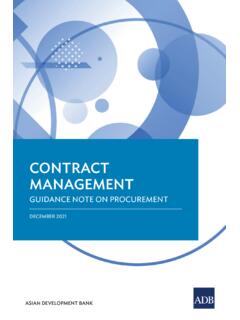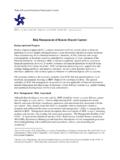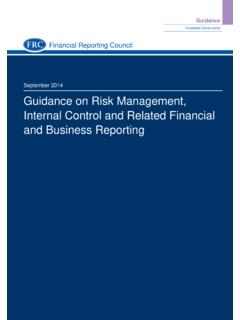Transcription of AS/EN/JISQ 9100:2016 EVALUATION GUIDANCE MATERIAL
1 2017 IAQG All rights reserved AS/EN/JISQ 9100 2016 (Rev D) EVALUATION GUIDANCE MATERIAL 1 Revision: AS/EN/JISQ 9100:2016 EVALUATION GUIDANCE MATERIAL Prepared by the IAQG 9101 Writing Team 2017 IAQG All rights reserved AS/EN/JISQ 9100 2016 (Rev D) EVALUATION GUIDANCE MATERIAL 2 Revision: Contents Page # Section Title 3 Introduction 4 Process auditing approach 4 General approach 5 Specific approaches 8 Audit considerations 8 Clause 4 - Context Of The Organization 12 Clause 5 Leadership 15 Clause 6 Planning 18 Clause 7 Support 24 Clause 8 Operation 48 Clause 9 - Performance EVALUATION 54 Clause 10 - Improvement 58 Change control 2017 IAQG All rights reserved AS/EN/JISQ 9100 2016 (Rev D) EVALUATION GUIDANCE MATERIAL 3 Revision.
2 Introduction This document provides general GUIDANCE for use by audit teams when executing the audit process described by the 9101:2016 standard, when conducting 9100:2016 audits. This GUIDANCE is not intended to add to, subtract from, or in any way modify the stated requirements, but to provide examples and thought stimulation things to consider , when asking questions and identifying objective evidence. NOTES: The GUIDANCE contained within this document can also be useful when preparing and planning an audit during the certification cycle. Acceptable means of compliance are not limited to those items listed in this document.
3 Any issues identified during audits are to be documented against 9100:2016 requirements. 9100:2016 clause describes the process approach developing, implementing, and improving the effectiveness of a Quality management System 9101:2016 clause describes the process approach when evaluating an organizations QMS Further ISO GUIDANCE is also available as follows: o Process approach for management systems - ISO/TC 176/SC2/N544R3 o Application of ISO 9001:2015 management system - ISO Technical Specification ISO/DTS 9002 This document does not provide GUIDANCE for the additional requirements defined by 9110 and 9120.
4 2017 IAQG All rights reserved AS/EN/JISQ 9100 2016 (Rev D) EVALUATION GUIDANCE MATERIAL 4 Revision: Process Auditing Approach General Approach When evaluating an organization's QMS, there are basic questions that should be asked of every process, for example: Is the process appropriately determined? Is the process identified and appropriately defined, including for example process inputs, outputs, resources and controls? Are Process Owner and Process User responsibilities assigned? Is the process implemented and maintained? Is the process effective in achieving the desired results?
5 Other questions could include: What is the process? What is it trying to achieve? Who is the customer of the process? Does the process address applicable customer specific requirements? Are Process User competencies identified? Is the process operating, as defined? What is the desired level of performance? Have process performance targets been established, including those specified by the customer? Have process measures ( KPIs) been established and are mechanisms in place to collate and analyze the data? What is the current level of performance? Is process performance regularly reviewed by top management ?
6 Where performance is not being achieved, are improvement plans in place? 2017 IAQG All rights reserved AS/EN/JISQ 9100 2016 (Rev D) EVALUATION GUIDANCE MATERIAL 5 Revision: Specific Approaches There are a number of specific audit approaches that can be built into the audit plan to provide focus on key elements of the QMS, including for example: Customer Focus The audit team should determine that customer satisfaction is being evaluated and appropriate actions are taken by the organization based on available performance information ( , nonconformity data, corrective action requests, results of satisfaction surveys, complaints regarding product quality, OTD, service provision, responsiveness to customer and internal requests) provided by the organization's customers ( , scorecards, report cards).
7 Organizational Leadership The Interview with top management should be used to evaluate: Establishment and continued relevance of the organization's quality policy and objectives; Establishment of performance measures aligned to quality objectives; QMS development, implementation, and continual improvement; Top management commitment; QMS performance and effectiveness; Performance to customer expectations ( , supplier rating, scorecard, audit results); and Actions taken to address issues that are not meeting customer performance expectations. QMS Performance and Effectiveness The audit of QMS performance and effectiveness should include a review of the following: Processing of customer complaints, customer feedback data ( , periodic performance reports received from customers), and other relevant customer data ( , results of customer surveys); 2017 IAQG All rights reserved AS/EN/JISQ 9100 2016 (Rev D) EVALUATION GUIDANCE MATERIAL 6 Revision: Results and actions from internal and external audits of the QMS, including their associated records.
8 Stakeholder feedback ( , feedback from regulatory authorities or other interested parties); Processing of process/product nonconformities, including review of associated corrective actions and EVALUATION on the effectiveness of actions taken; Processing of preventive actions, including EVALUATION on the effectiveness of actions taken; management review conduct, including associated records ( , process inputs/outputs, actions taken); Internal performance monitoring, measurement, reporting, and reviews against stakeholder and internal performance objectives and targets, including continual improvement activities and associated records; Organization s current performance against targets, including customer specific targets and associated records of applicable actions taken where targets are not being met; and The status and effectiveness of the organization's process performance improvement activities and their outcomes related to product quality.
9 Process management The audit team should conduct QMS audits using a method that focuses on process performance and effectiveness; this ensures that priority is given to the following: Reviewing the organization's processes, their sequence and interactions, the identification of functions and assignment of responsibilities, and performance against requirements and defined measures, with focus on processes that directly impact the customer; Reviewing the process for validation and approval of processes and process changes; Reviewing the availability of resources and information required to operate and support associated activities, including appropriate training and competency of personnel; Reviewing the process-based management techniques, including the examination of process measures ( , quality, tact time, cycle time, output effectiveness, control limits, process capability determination).
10 Reviewing plans in place to ensure performance objectives/targets are monitored, measured, and analyzed in order to realize the planned activities and achieve the planned results ( , verify performance information availability, percentage of nonconforming parts/products, percentage OTD); 2017 IAQG All rights reserved AS/EN/JISQ 9100 2016 (Rev D) EVALUATION GUIDANCE MATERIAL 7 Revision: Reviewing applicable action taken when objectives/targets are not met to promote continual improvement; and Pursuing audit trails addressing customer concerns or requests for corrective actions, performance against objectives, and relevant process controls.





